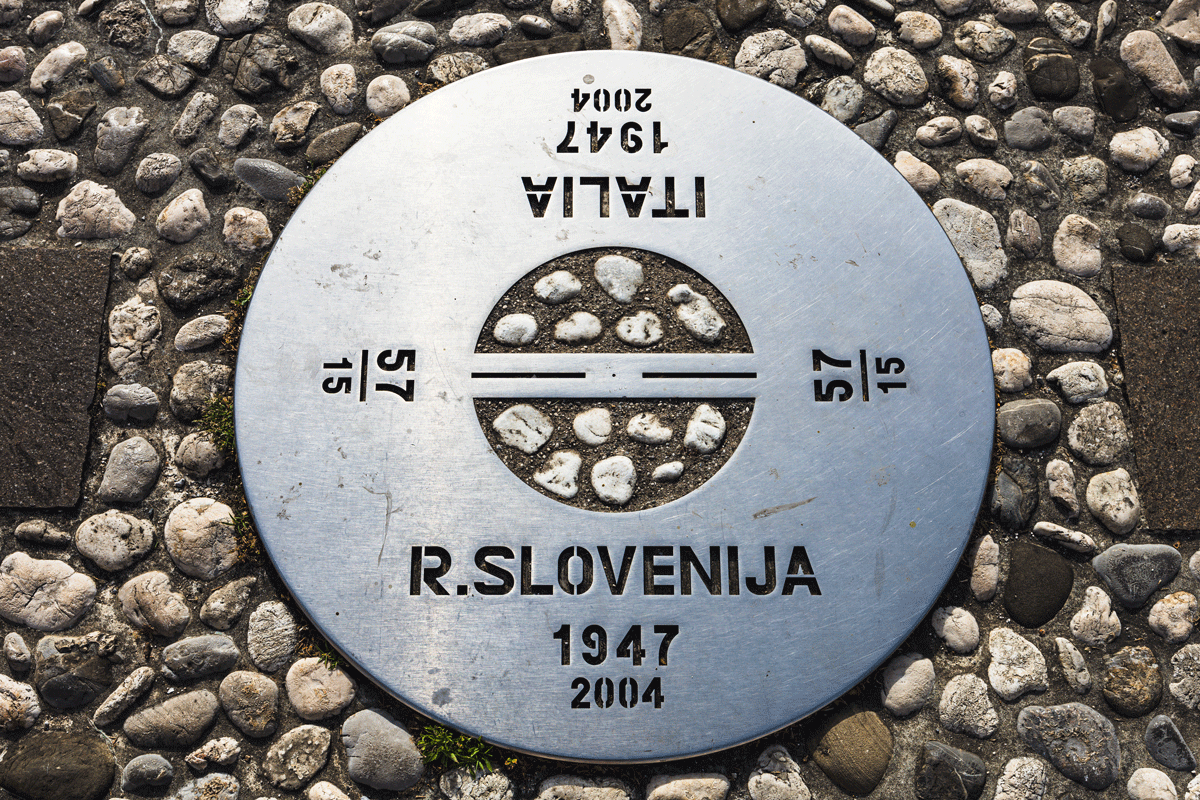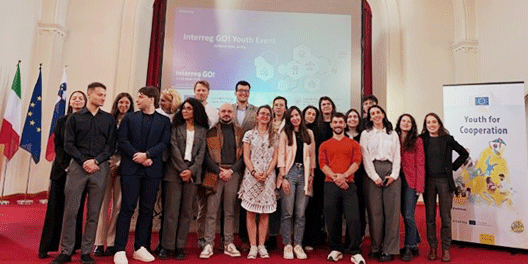Where Borders Fade: Celebrating European Cooperation in Gorizia and Nova Gorica
- 23 Apr 2025

On 27 and 28 March, the twin cities of Gorizia (IT) and Nova Gorica (SI) hosted Interreg GO! This milestone event marked 35 years of European territorial cooperation and took place in a highly symbolic city. Gorizia and Nova Gorica are twin cities, sitting on the border between Italy and Slovenia and in a region that underwent the traumatic political shifts of the early 20th century and later were split by the Iron Curtain until the 1990s. Gorizia and Nova Gorica as they now stand united, have become a symbol of reconciliation and cooperation.
On such a stage, the Interreg GO! conference was more than just a commemoration as it showcased the power of cross-border unity and shared European values.
Sharing the title of 2025 European Capital of Culture, Gorizia and Nova Gorica are the first border cities to do so. This historic collaboration, inspired by the motto ‘GO! Borderless’ testifies to these two cities’ commitment to cross-border unity and cultural integration.
Such is the commitment that underpins the mission of Interreg: the EU instrument that promotes harmonious development across borders through cooperation. By reducing obstacles created by borders and weaving cross-border relationships, solidarity and trust, Interreg finds in Gorizia-Nova Gorica its ideal poster child.
Celebrating 35 years of successful territorial cooperation, in Europe and beyond
For the past 35 years, Interreg has played a vital role in transforming border areas and catering to their specific needs. Through Interreg, support has flowed towards the development of better infrastructure and cultural, environmental, and economic projects that transcend borders.
One such example is CROSSIT SAFER, a project enhancing emergency preparedness to fight wildfires between Italy and Slovenia. The project was inspired by the devastating wildfires that laid waste to the Karst region in 2022, while exposing the vulnerabilities of border regions in the face of fast-moving natural disasters. CROSSIT SAFER emerged to set up a coordinated cross-border response by strengthening institutional collaboration and developing joint prevention, warning, and intervention measures. Key outcomes—such as a cross-border emergency protocol, standardized procedures, and joint training for civil protection units—have significantly improved coordination, readiness, and resilience in a region where natural risks do not stop at national borders.

Looking to the future
While celebrating its past, Interreg GO! also set its sights on the future of European territorial cooperation. After a year-long consultation on Interreg programmes, stakeholders and citizens were able to evaluate the results. The 15,000 responses to the consultation are a testimony to the widespread interest in the future of Interreg.
Notably, respondents widely acknowledged that Interreg is not just a funding tool, but rather a political instrument that embodies European values of unity, cooperation and resilience. By making Interreg more visible, accessible and impactful, the EU can ensure that territorial cooperation remains at the heart of the European project. Moreover, a widespread consensus indicated that Interreg is the most tangible and visible expression of European integration.
Interreg has created a durable legacy, and cooperation should remain a core objective of the European Union. Commission Executive Vice-President Fitto stressed that the partnerships developed over 35 years should continue. Interreg stands as the best representation of a continent where rivalries have yielded the way to cooperation, consistently with the values of the EU.
Vice-President Fitto added that in an increasingly unstable world, Interreg and cooperation are needed more than ever to project unity and stability across our external borders. Interreg also contributes to enlargement and solidarity with neighbouring countries and regions.
Young people at the core of European cooperation
The conference was also the opportunity to recognise the strong voice of youth in Interreg.
Young voices were heard on stage as youth representatives showcased the content of the Declaration by young people on the future of Interreg in front of a large audience of decision-makers and Interreg programme authorities. They asked for increased cooperation efforts across Europe, with a stronger inclusion of young people both as actors and targets of cooperation actions.
Young people had their own dedicated event in Gorizia on 26 March, organised by the European Commission, the Friuli-Venezia Giulia Region and the University of Trieste. Around 200 students met with representatives from the European Commission, Italian and Slovenian authorities, and local Interreg project partners to explore how Interreg supports cross-border cooperation and opportunities for youth.
The event was part of a broader Commission initiative to involve young people not only as beneficiaries of Interreg but also in its management and communication. As European integration continues, engaging the next generation is key.
Throughout the afternoon, participants learned about the current state of cohesion policy and its future and exchanged ideas with senior officials. A project fair at the University showcased successful Interreg projects in the Italy–Slovenia border region and offered a chance to network with beneficiaries and partners.
As the celebrations in Gorizia and Nova Gorica came to a close, one message rang clear: territorial cooperation is not only a success story of the past, but a promise for the future. From rebuilding trust across former dividing lines to facing today’s shared challenges together, Interreg continues to show how borders can become bridges. With young people stepping forward, citizens engaging in shaping future programmes, and cross-border partnerships proving their worth on the ground, the spirit of Interreg is stronger than ever.
In a world that too often highlights division, Gorizia and Nova Gorica offer a living example of unity in diversity. As we look ahead to the next chapter of European integration, Interreg remains a vital tool for building a more connected, resilient, and inclusive Europe—one border at a time.


